|
HOME: www.hiltonpond.org |
|||
THIS WEEK at HILTON POND Subscribe for free to our award-winning nature newsletter (Back to Preceding Week; on to Next Week) |
|
CONFUSED AND CONFUSING Roger Tory Peterson, deserving of high praise for his trend-setting natural history field guides, nonetheless put a whammy on the birding word with his phrase "confusing fall warblers." Granted, in autumn many immature Wood Warblers look superficially similar and some adults take on subdued plumage, but careful attention to various field marks means identifying these birds isn't nearly as difficult as Peterson may lead folks to believe. What IS confusing to many beginning birders is that numerous species of Wood Warblers--the hallmarks of spring and fall migration--don't actually head for tropical climes come winter. In fact, here at Hilton Pond Center we can see an unconfused warbler or two almost any day of the year . . . even on cold mornings like earlier this year when overnight temperatures dropped to single digits.
All text, maps, charts & photos © Hilton Pond Center By our calculation, 38 species of eastern Wood Warblers (Parulidae) are theoretically possible around Hilton Pond at some time during the year. Amazingly, during three decades of local observation and banding, we've encountered 35 of them on the property, with Kirtland's, Cerulean, and Mourning the only three "possibles" avoiding us to date. (NOTE: We HAVE banded wintering Mourning Warblers, above, among the Chayote fields at Ujarrás, Costa Rica in November.) Many of our 35 species such as those Mourning Warblers occur in the Carolina Piedmont only during migration, flying through in spring to breed further north or southbound in fall on their way to the Neotropics. Even so, another half dozen parulids can be seen here with more or less regularity even in January, and you can be sure these winter resident warblers are not confused about migration--nor are they all that confusing in appearance.
All text, maps, charts & photos © Hilton Pond Center By far the most abundant winter parulid at Hilton Pond Center is Yellow-rumped Warbler, Setophaga coronata, although you're not likely until spring to see an adult male in full breeding plumage as in the photo above. Ornithologists calculate this species--formerly known as Myrtle Warbler--is the most abundant of all Wood Warblers with an estimated 130,000,000 individuals in North America. (After banding Tennessee Warblers by the hundreds on our Central American hummingbird sites we thought that species might be most common, but at 70,000,000 individuals Tennessees are just the FOURTH-most-populous parulid.) Yellow-rumped Warblers (alpha code MYWA) breed up the Appalachian Ridge and north across southern Canada, wintering about everywhere the southern U.S.
All text, maps, charts & photos © Hilton Pond Center Named for their upper tail coverts, MYWA (adult female above, in winter plumage) are known more naughtily as "butterbutts"--a nickname almost guaranteed to titillate younger birders. This prominent field mark, along with white tail spots, streaked flanks, two wing bars, and a broken white eye ring separates the species from other winter warblers in the East. Yellow-rumped Warblers also usually show a yellowish spot on the flank just behind the bend of the wing.
All text, maps, charts & photos © Hilton Pond Center On the most frigid January days, MYWA sometimes skitter across Hilton Pond (above), where they appear to glean tiny seeds from windrows on the iced-over surface. Butterbutts are by far our most common cold weather parulids at the Center with 2,198 captured since 1982; that's 3.7% of all birds banded locally. As evidence they truly are winter warblers, we've caught no yellow-rumps after the first week in May or before the first week in October.
All text, maps, charts & photos © Hilton Pond Center A second common winter parulid around Hilton Pond Center is the Pine Warbler, Setophaga pinus, actually a permanent resident. Pale individuals (above) of this species are sometimes confused with Yellow-rumped Warblers because both have broken eye rings, wing bars, tail spots, and flank streaks, but the upper tail coverts on a Pine Warbler (see below) are never as bright and well-defined as on "butterbutts."
All text, maps, charts & photos © Hilton Pond Center Bright-plumaged Pine Warblers (PIWA)--typically adult males (above)--can hardly be confused with anything in winter--although we have heard folks mistakenly call them American Goldfinches. This year we have an relatively abundant crop of PIWA outside our windows, with at least a half-dozen making frequent visits to suet feeders. Since 1982 we've banded 160 Pine Warblers at the Center, but the species was much more common locally until the mid-1990s when a neighboring farmer clear-cut 75 acres of mature Loblolly Pines that provided breeding and roosting habitat--and not just for PIWA.
All text, maps, charts & photos © Hilton Pond Center Palm Warbler, Setophaga palmarum (pale immature, above), is one of those birds poorly named--likely because the first individuals reported by serious ornithologists were seen in Sabal Palmetto trees during migration. In actuality, Palm Warblers (PAWA) breed in Canadian bogs--nowhere near palm trees of the Coastal Southeast. They do overwinter in coastal areas, however, and occasionally here in the Carolina Piedmont where they, too, are occasionally confused with Yellow-rumped Warblers. Pale PAWA, however, look even less like butterbutts, with faint yellow upper tail coverts and a complete lack of wing bars and tail spots. (Note, however, that Palm Warblers have a bright yellow crisssum--the UNDER tail coverts.)
All text, maps, charts & photos © Hilton Pond Center Mature PAWA birds in bright plumage (above) are easily distinguished by a noticeable rusty cap and nearly constant tail-wagging. We've banded 57 banded Palm Warblers at Hilton Pond Center in 30-plus years, nearly 80% of those during fall migration. (NOTE: There are two races of Palm Warbler; the yellow or race is typically found in the eastern U.S. during winter, while the paler race is more westerly in distribution.)
All text, maps, charts & photos © Hilton Pond Center Perhaps the most hyperactive of winter warblers at the Center is Common Yellowthroat, Geothlypis trichas--also our smallest cold-weather parulid. This species breeds almost everywhere across U.S. and Canada, usually somewhere near water; it is absent only from the southwestern deserts. A small population probably resides year-round in the Carolina Piedmont, with a few more birds arriving to spend the cold months before moving back north. Common Yellowthroats (COYE) are by no means common around Hilton Pond in winter and we only have two records for the York/Rock Hill Christmas Bird Count in 23 years, but they do occur. Of 360 COYE banded locally since 1982, about 70% have been spring migrants.
All text, maps, charts & photos © Hilton Pond Center Male Common Yellowthroats (immature above) are easily distinguished from everything except Yellow-breasted Chats by their black masks and yellow throats; chats are twice as big, however, have much heavier bills, and are found even less commonly in winter. Female Common Yellowthroats lack a mask and are paler overall, and both sexes have neither wing bars nor tail spots.
All text, maps, charts & photos © Hilton Pond Center Undoubtedly the easiest of our winter warblers to identify is the aptly named Black-and-white Warbler, Mniotilta varia, (adult male above), whose heavy bill, bark-gleaning habit, and stark plumage sometimes leads folks to believe it's a woodpecker. Although a few Carolina Piedmont individuals are year-round residents, some migrant Black-and-white Warblers (BAWW) arrive so early in spring they are mistakenly thought to have been around all winter.
All text, maps, charts & photos © Hilton Pond Center Sexes are externally similar among Black-and-white Warblers, although females and immature males lack the black cheek patch of the adult male (compare two photos above). The species breeds across the Southern Piedmont, New England, and much of Canada but is absent in the Coastal Southeast and the western half of the U.S. (And to clarify one common misunderstanding about BAWW: Even though they're bark gleaners and superficially resemble woodpeckers, they are NOT cavity dwellers; they nest on the ground in clumps of leaves at bases of trees.) We've banded 164 Black-and-white Warblers at Hilton Pond.
All text, maps, charts & photos © Hilton Pond Center The Center's least common winter parulid is Orange-crowned Warbler, Oreothlypis celata, for us an enigmatic species that breeds in the western U.S. and across Canada. It is the most numerous migrant warbler west of the Mississippi and sometimes wanders east during colder months. With only four banded locally in 33 years, we haven't much first-hand information about the species, pictured above in drab, immature plumage. (Adults typically have gray heads, but there's some variability in color among races and subspecies.)
All text, maps, charts & photos © Hilton Pond Center As far as winter warblers go, this one is pretty nondescript; Orange-crowned Warbler (OCWA) is identified by a combination of yellow under tail coverts, faint chest streaking, overall olive green plumage, lack of wing bars and tail spots. (Caveat: Some immatures have buffy wing bars.) The bill is finely pointed like that of a Tennessee Warbler, but broader at the base. Orange-crowned Warbler's best field mark is the orange crown (above) that gives the species its name; alas, this can be quite pale in immatures and usually is hidden in adults. As winter warblers, the six birds above could be seen in the Carolina Piedmont long after fall migration of the other Wood Warblers has ended. A handful of other parulids might be encountered nearby but are more likely in coastal areas where moderating maritime weather makes conditions more bearable; these include Magnolia Warbler, Yellow-throated Warbler, Prairie Warbler, American Redstart, Wilson's Warbler, Yellow-breasted Chat, and Ovenbird. (Hmmmm. Wonder how many winter Ovenbird reports are actually Hermit Thrushes?) In any case, one ought not be startled when encountering warblers in January at Hilton Pond Center and elsewhere, especially during years when suet feeders, wild berries, and discoverable insects provide all the nutrition needed by these "Confusing Winter Warblers."
All contributions are tax-deductible on your |
|---|
|
"This Week at Hilton Pond" is written and photographed by Dr. Bill Hilton Jr., executive director of Hilton Pond Center for Piedmont Natural History.
|
|
|
Please refer "This Week at Hilton Pond" to others by clicking on this button: |
Comments or questions about this week's installment? Send an E-mail to INFO. (Be sure to scroll down for a tally of birds banded/recaptured during the period, plus other nature notes.) |

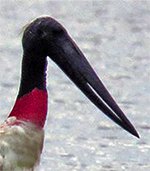
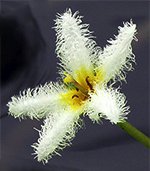
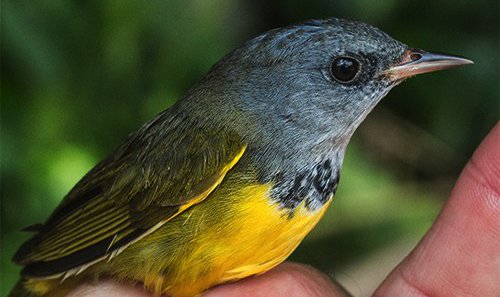

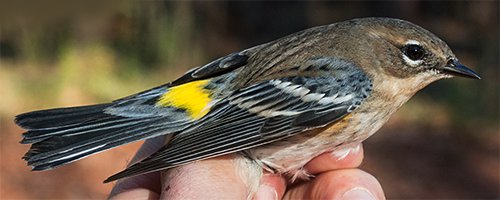


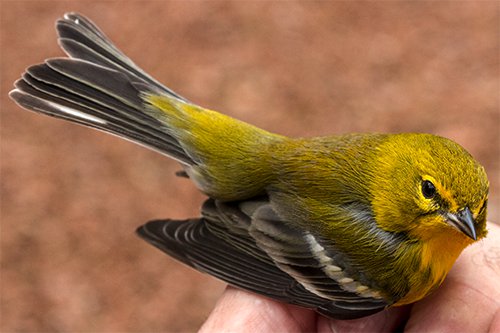
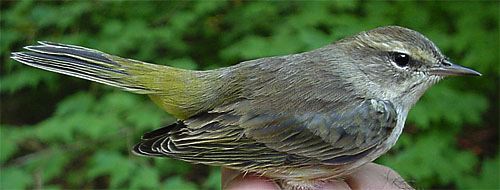

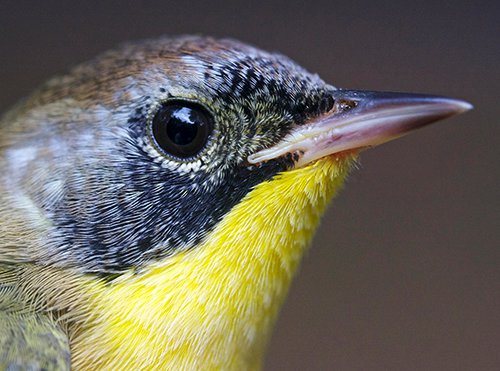
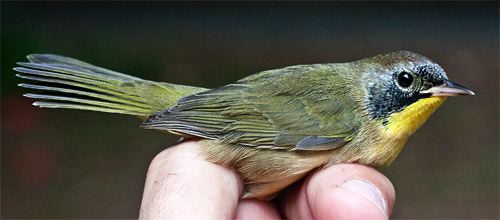
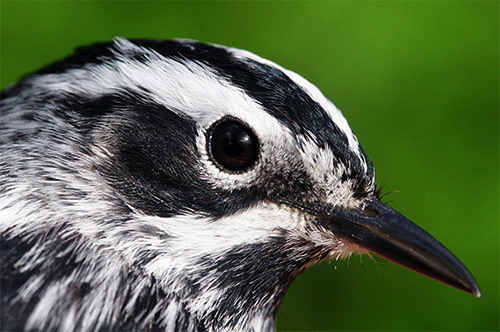
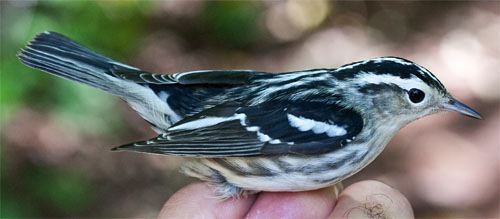
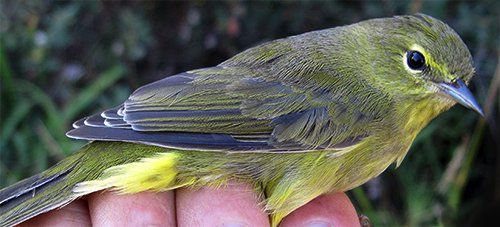
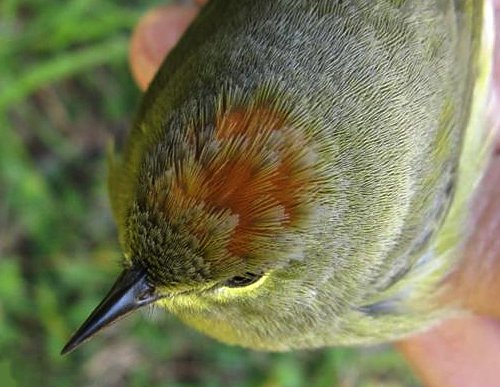
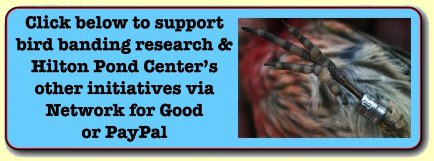







 Oct 15 to Mar 15:
Oct 15 to Mar 15: